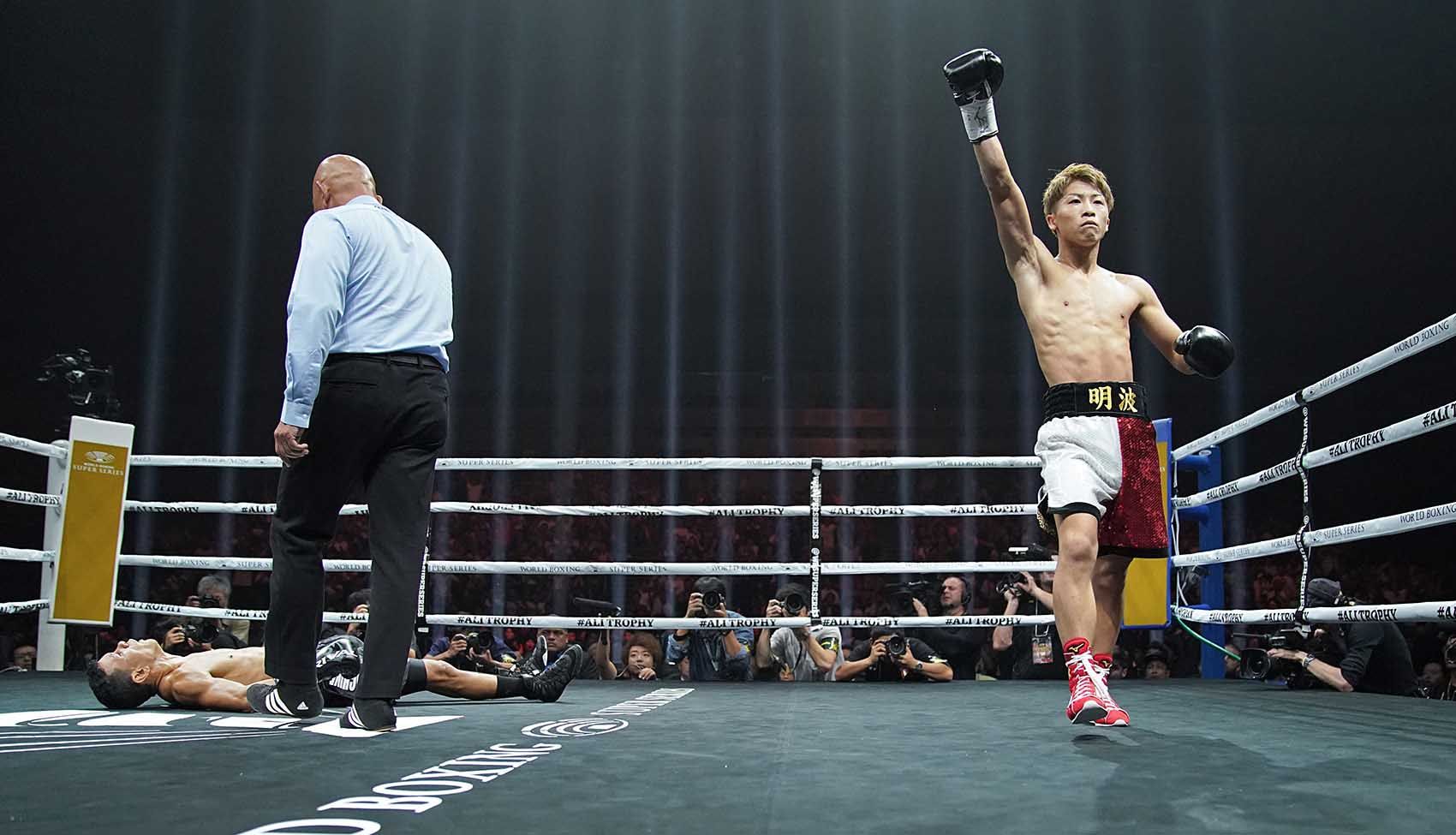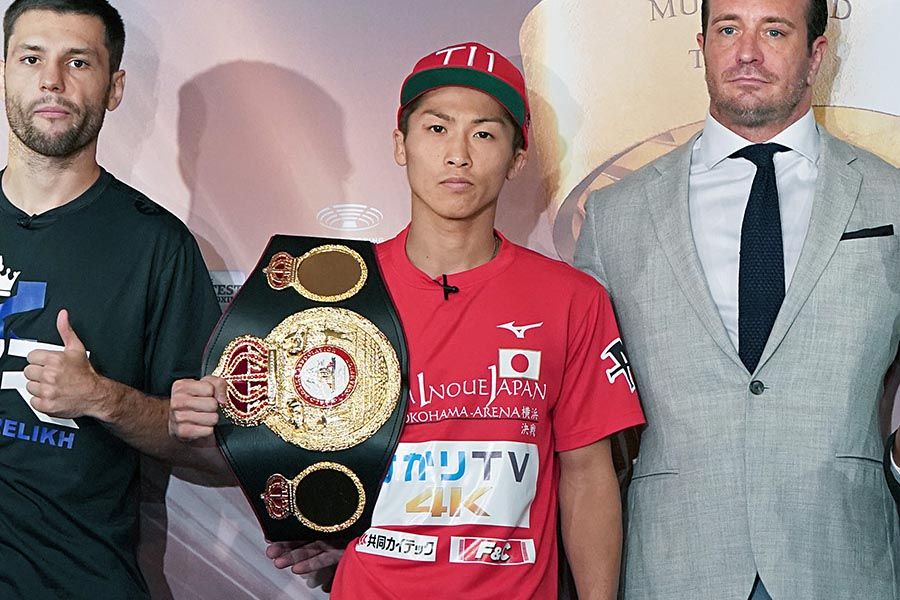It’s easy for hardcore boxing fans abroad to forget that Japan isn’t a ‘boxing country.’ That’s not to say Japan hasn’t historically been very successful in the sport; it just isn’t part of the culture in Japan the way it is in Latin American countries, or even the United Kingdom. Baseball and tennis have traditionally been far more accessible to fans there, with Shohei Ohtani and Kei Nishikori being household names in the Land of the Rising Sun.
If there’s one man who could change that, it’s probably Naoya Inoue.
Inoue, the unbeaten 25-year-old from Yokohama, has broken through the usual ‘regional attraction’ label and earned himself a spot on any pound-for-pound list worth looking at. He’s done so by winning world titles at 108lbs and 115lbs, plus the lesser WBA ‘regular’ belt which he currently holds at 118lbs. More than the hardware he has accrued, Inoue also passes the so-called ‘eye test’. Take for instance his last outing, his opening round matchup in the World Boxing Super Series against Juan Carlos Payano. It wasn’t just that he had starched a former world titleholder in one round who hadn’t been knocked out before. It’s how he did it.
The way Inoue created an opening, then changed the angle of his jab in order to land that right hand was a thing of beauty. #InouePayano #WBSS #boxing
— caleb truax (@GoldenCalebT) October 8, 2018
This was Caleb Truax, former IBF super middleweight titleholder, talking about how Inoue got things done against his southpaw opponent.
More than one weapon
Inoue has scored stoppages in his last seven fights, with the five most recent opponents having never previously been knocked out. And he’s shown throughout his six-year career that he has more than one weapon. In the fight prior, a first round stoppage of Jamie McDonnell, the first knockdown was scored by a body shot. He similarly dismantled Yoan Boyeaux with a combination of body punches, and set Antonio Nieves down with a body shot in his U.S. debut a year ago.
His left hand gets much of his work going, with a stinging jab as sharp as any in the sport today and the ability to throw any other punch in combination with his lead hand.
https://www.youtube.com/watch?v=TkvAME5-VIM
The question remains; what good is passing the ‘eye test’ if people can’t see your fights? That’s likely what kept Inoue out of consideration for BWAA Fighter of the Year in 2014, when he won his first two world titles in Japan with the only means to watch the fights via obscure internet streams.
Road warrior
That has been ameliorated by Inoue’s willingness to leave Japan. Now, I know what you’re thinking: ‘Japanese fighters don’t have to leave Japan because TV, sponsors and ticket-buyers support the sport’. It’s fortuitous for the Japan-based fighters, but in terms of influencing observers’ opinions abroad, it paints the picture of home-cooking. Not to say that explains it all, but American audiences like to get a closer look at a gem to see if it has any clouds in it.
Could you imagine if the world had gotten a chance to see Hozumi Hasegawa and Akira Yaegashi in their primes?
Inoue made an appearance in the ‘Superfly’ series dismantling Nieves in six at the StubHub Center in Carson, Calif. His inclusion in the WBSS 118lbs tournament gives him exposure to U.S. audiences on the DAZN app, but it also gives him a built-in roster of high-caliber foes to match his skills against. His semi-final match-up will be against IBF titleholder Emmanuel Rodriguez of Puerto Rico, who survived a late-rally against Australian contender Jason Moloney to retain his title in his opening match of the tournament last month. A win over Rodriguez, a versatile, quick-handed counterpuncher, would earn Inoue his third world title in as many weight classes and go a long way towards proving his easy wins at 118 pounds haven’t been a matter of circumstance.
The winner of Inoue-Rodriguez would then face another high profile matchup for the Muhammad Ali Trophy, be it WBO world titleholder Zolani Tete, WBA titleholder Ryan Burnett, or living legend Nonito Donaire Jr.
The WBSS could go a long way towards positioning Inoue as one of the top few best fighters in the world, the way it did for Oleksandr Usyk. That is, if he can continue to win.

Could he eventually rise to become the best fighter in the world, pound-for-pound? The talent is certainly there and without any major conflicts the way other factions in the United States are segregated by promotional affiliation, theoretically he could move between promotions to make the necessary fights to raise his profile. The biggest fights available to Vasyl Lomachenko and Terence Crawford, the top two fighters on The Ring magazine’s pound-for-pound list, are Mikey Garcia and Errol Spence, respectively. Being on the ‘wrong side of the street’ is unfortunately a major impediment to making big fights in 2018.

Time on his side
Inoue also has time on his side, being one of just three boxers currently on Ring’s list under the age of 30, and is the youngest inclusion by several years.
Just 17 fights into his career, it may be premature to start opening up the conversation of whether Inoue is ready to supplant Fighting Harada as the GOAT of Japanese boxing. But that it’s something to consider down the line says enough about where Inoue stands currently.



















